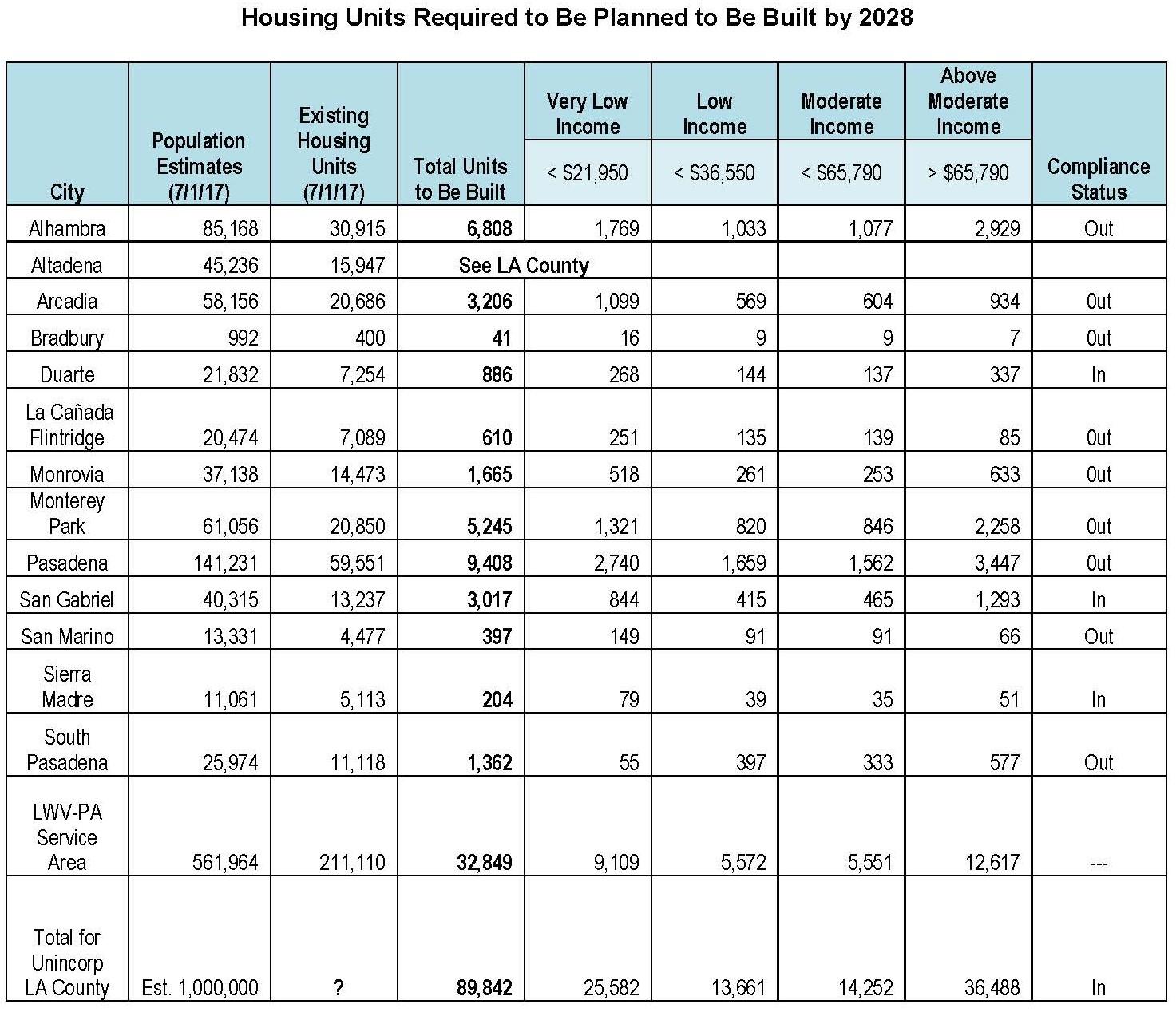Pasadena’s Measure H
The LWV-PA supported Measure H in Pasadena to amend the City Charter to impose rent control on buildings built before 1995, to enact just cause eviction protections for all tenants and landlords, to establish a rental registry that captures current rents and code violations, and to establish a rental housing board to set the allowable rent increases and help with disputes between landlords and tenants.
As of Saturday, November 20, the L.A. County Registrar showed Measure H leading by more than 3,500 votes, a lead that was increasing steadily as votes were counted.
What Prop H will not do, and never was intended to do, is expand the supply of affordable housing. The intent of the proposition is to stabilize the supply we already have.
Affordable Housing
Building more affordable housing is an even harder nut to crack. The state is taking the path of mandating that EVERY community take on its fair share of the 2–3 million units of missing housing needed to adequately house all Californians. Every city has been allocated the number of very low, low, moderate, and market rate units that they need to account for in their general plans’ housing elements (HEs). Slowly but surely, all the communities in our service area have submitted their plans for review by the Department of Housing and Community Development for approval.
At this time, four HEs have been approved. On the chart (“Housing Units Required to Be Planned to Be Built by 2028”), “In” means the city is in compliance, and “Out” means it is not. Lack of approval takes control of new projects out of the hands of local government and puts it into the hands of developers to build whatever they think they can build. Santa Monica is already dealing with a proposal that came in before its HE was approved. The proposed structure is a fifteen-story, 2,000-unit apartment building that will be one of the largest structures in the city.
Assessing Your Own City
Review your city’s status in the following chart and then go to your planning department’s website to find what was submitted on your behalf. Then ask the following questions:
- Did they address Affirmatively Furthering Fair Housing (AFFH) for people of color and/or people with disabilities?
- Did they properly research available properties for future development?
- Did they address the zoning changes that will be needed to allow for denser development?
Remember, we live in the largest metropolitan area in the country, and the only way we will be able to build enough housing to significantly reduce travel times to work (and therefore reduce greenhouse gas emissions) and at the same time address homelessness is to allow more density in our housing stock. And in order to accommodate all the people who provide services in our communities we must make a significant part of those new units affordable to those with very low, low, and moderate incomes.

What Is LWV-PA Doing?
The LWV-PA Housing Subcommittee has established a plan for researching how to reduce the barriers to affordable housing. This will include looking into:
- land trusts (a new one, established by legislation, will hold land in trust to build affordable housing in the Burbank-Glendale-Pasadena area)
- vacancy taxes
- transfer taxes
- tax credit programs
- inclusionary zoning ordinances
- any other incentives that seem viable
Don’t understand how these things work? Please join our committee. We will be meeting on the third Friday of the month at 9:30 a.m. Locations vary. Interested? Contact Anita Mackey at (203) 685-2315 or anita [at] pixelriot.com.
—Anita Mackey